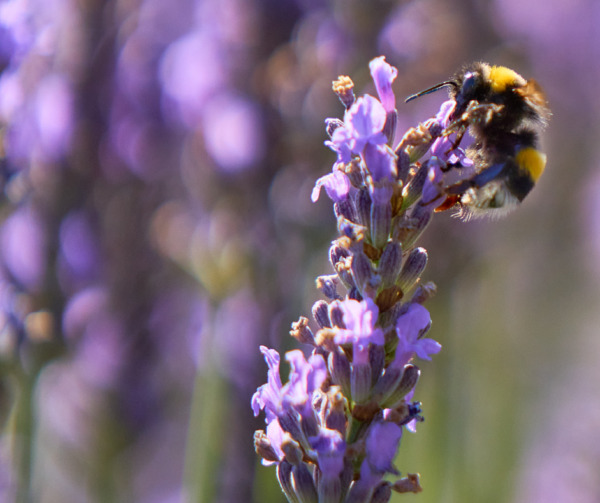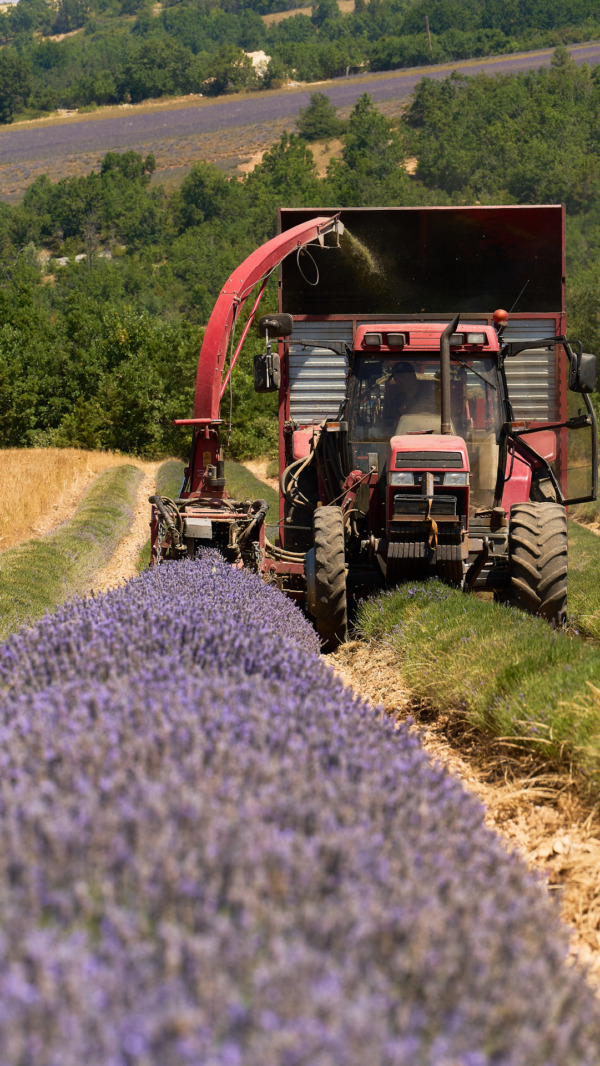
If you love lavender like we do and you’ve done a quick search on the different lavender varieties out there, you know there are a lot! You’ve also found that, like with most things in life, not all lavender is created equal. In this guide, we’ll take you on a tour of some of the most popular lavender varieties and their uses. Understanding their differences will help you make informed decisions about which type of lavender is right for you.
As you research lavender, one of the first facts you learn is that, though considered a homogenous group of plants, there’s quite a bit of variation among the different lavender varieties.
Common lavender varieties

The most common lavender plant varieties you’ll find are English lavender, French lavender, and Spanish lavender.
English lavender (Lavandula angustifolia) is the most popular type of lavender. It boasts a sweet, floral aroma and is featured in a variety of products, including soaps, perfumes, and potpourris. The plant also yields an oil with a relaxing aroma that you can diffuse as part of your nighttime routine.
French lavender (Lavandula stoechas) is a less commonly used variety of lavender. It has a strongly aromatic scent reminiscent of the camphor tree and is also traditionally used to soothe, moisturize, and hydrate the skin.
Spanish lavender (Lavandula hispanica) is the least common variety of lavender, with a strong, pungent aroma used in perfumes.
Later in the guide, we’ll also touch on less common varieties of lavender, such as Portuguese lavender and lavender cotton.
English lavender (Lavandula angustifolia)
English lavender (Lavandula angustifolia) is a versatile plant with many uses and benefits. The strong fragrance of this lavender makes it a popular choice for essential oils, potpourri, and sachets. The dried flowers can also be a fragrant addition to baking and craft projects.
Lavender is known for its calming and relaxing aromatic properties, making it a popular ingredient in many cosmetics and bath products.
As a perennial plant, English lavender is easy to grow in most gardens. It prefers particular growing conditions—full sun and well-drained soil. You can also grow lavender using seeds, cuttings, or divisions.
This lavender blooms from late spring to early summer. The lovely blue or purple flowers are especially attractive to bees. Lavender is sometimes paired with other crops as a companion plant to deter pests with its scent.
Preferably, harvesting lavender for use in dried arrangements or for extracting its essential oil should be performed just as the flowers start to open. If you’re the one doing the harvesting, the trick is to cut the stems early in the morning before the heat of the day wilts the flowers.
French lavender (Lavandula stoechas)
French lavender is a perennial plant that can grow up to two feet tall. It has long stems that sprout small, purple flowers with dark green leaves that show off a silvery sheen. A native of the Mediterranean region, French lavender is widely cultivated in more places than France—you’ll also find beautiful fields of it in Spain and Italy.
If you are looking for a plant that’s beautiful, fragrant, and useful, French lavender checks all the boxes. It’s easy to grow and maintain and it adds a touch of beauty and a calming aroma that’s sure to become the highlight of any home or garden.
Spanish lavender (Lavandula burnatii)

Spanish lavender (Lavandula burnatii) is a beautiful, fragrant, and versatile plant that brings many benefits to the table. The most common use for Spanish lavender is in aromatherapy, where its strong, pleasing scent is used to inspire a calm, relaxing environment. Lavender essential oil is also included in many cosmetics and skin care products because of its properties that are cleansing and soothing to the skin.
However, Spanish lavender is more than just a pretty face! This tough little plant is also helpful when it comes to landscaping and gardening. It’s drought-tolerant and can thrive in poor, dry soils. Plus, Spanish lavender is often used as an accent plant or border in flower beds and gardens.
Portuguese lavender (Lavandula latifolia)
Portuguese lavender, or Lavandula latifolia, is a species of flowering plant that’s one of the lesser-known members of the lavender family. It also hails from the Mediterranean region and is widely cultivated as an ornamental plant. The Portuguese lavender plant grows into a large shrub with gray-green leaves and distinct purple flowers. The flowers are borne on spikes that grow up to 12 inches (30 centimeters) long. Like other lavender varieties, the Portuguese version is drought-tolerant and thrives by basking in the full heat of the sun.
Lavender cotton (Santolina chamaecyparissus)
Lavender cotton, or Santolina chamaecyparissus, is a species of lavender that, like many of its cousins, comes to us from the Mediterranean, where it can get all the sun it needs to grow. This particular lavender plant is known for its small, white flowers and its ability to thrive in dry, sandy soils. Lavender cotton, like Portuguese lavender, is widely considered an ornamental plant, though it also comes with several practical uses.
The oil from lavender cotton flowers features a scent that’s different from other kinds of lavender yet is also found in soaps, cosmetics, and other products. The plant’s oil has a strong scent that helps with outdoor annoyances.
The dried flowers of lavender cotton can be added to water to make tea. Their floral scent also makes them a popular ingredient in potpourris and sachets.
Like other lavender varieties, lavender cotton is a low-maintenance plant that is easy to grow and care for. The plant is at its best in full sun and well-drained soil. As hardy as the rest of the lavender family, it’s drought-tolerant and doesn’t need much fertilizer. Once established, lavender cotton requires very little maintenance.
So many lavender varieties to choose from!

The wonderful world of lavender varieties offers a symphony of fragrances, colors, and benefits. As you begin your journey with lavender, whether as a garden highlight or as a beautiful floral scent for your home, we invite you to explore the different varieties of this timeless plant.
The post A guide to popular lavender varieties appeared first on Young Living Blog – US EN.
